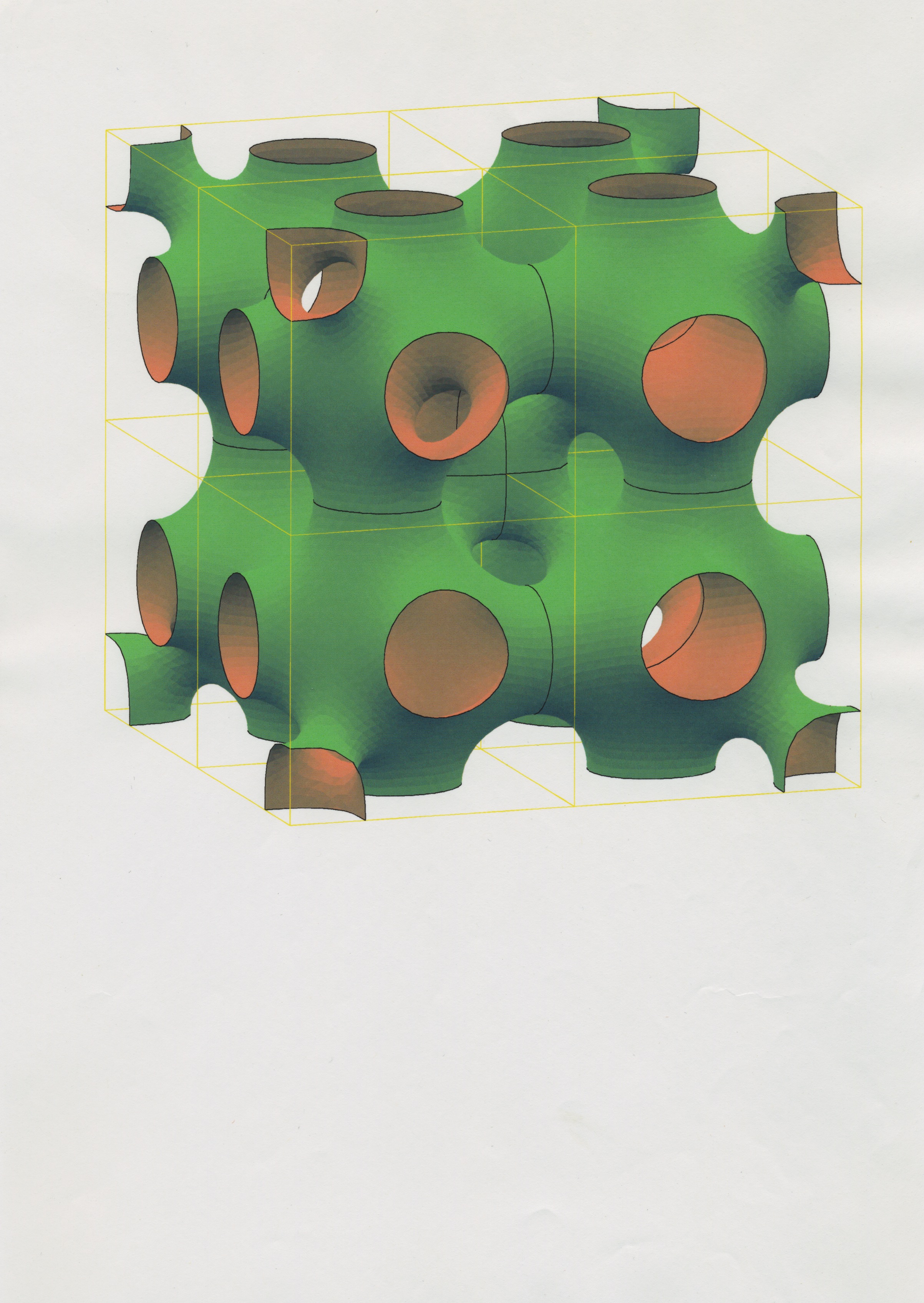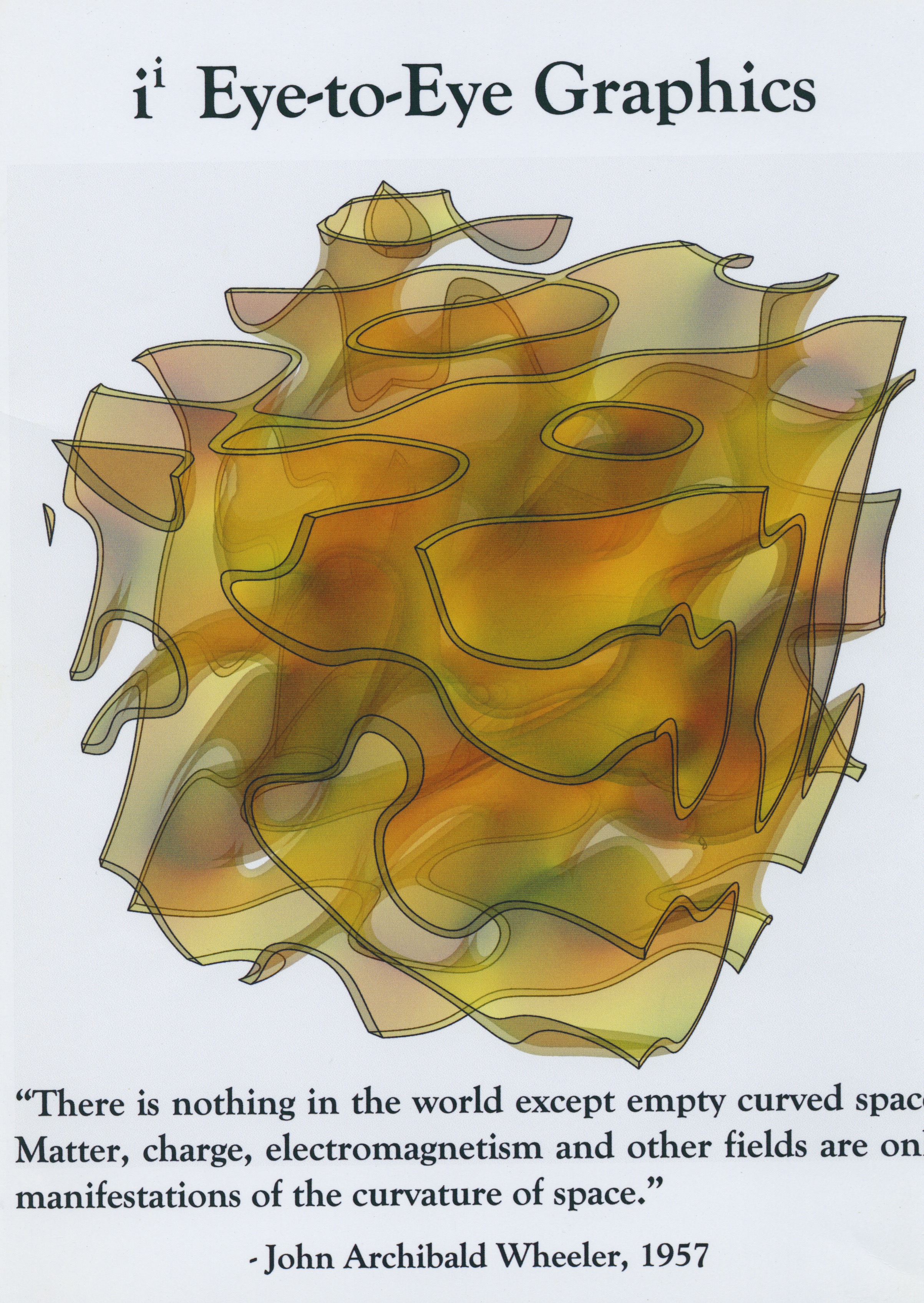The Multiply-connected Universes of Sho Takahashi
Through the literature of the Tokyo-Berlin-Rome Axis left behind in the
library of Tsukuba University, Takahashi became acquainted with the eccentric
cosmological views of the Nazi Party, deriving from Hans Horbiger and even
crazier people, which were taken up by Hitler and Himmler, the head of the
Gestapo. Himmler believed that the Earth was indeed spherical but that we live
on the inner concave surface. In April 1942 German military radar equipment at
Ruegen was diverted to see if an echo could be obtained from the Antipodes,
although after a moment’s reflection they should have realised that a
spherical shell produces no gravitational field in its interior.
Takahashi found this idea too simple and was stimulated to think of something
topologically more interesting than the Aryan occultism. He came upon the
periodic minimal surfaces of H. A. Schwartz and his successors.
For someone living on such a surface there would be many looped paths leading
back home, like tunnels in a termite mound. Modern science fiction echoes the
serious suggestions of John Wheeler and other modern cosmologists of
multiply-connected universes.
The present series of pictures are part of a sustained effort to promote the
use of these surfaces in engineering, design and art and to introduce shapes
more sophisticated than those of Takahashi’s better-known predecessor in
geometrical design, Isamu Noguchi and his contemporary, Shigeru Ban. Ban has
produced buildings using paper cylinders, but is constrained to using only
developable surfaces (with zero Gaussian curvature). Takahashi seeks to escape
from this and is exploring ways of manufacturing sheets of various materials
with hyperbolic curvature. As with Buckminster Fuller’s geodesic domes,
where the curvature is spherical, the major problem is in joining the sheets
elegantly.


